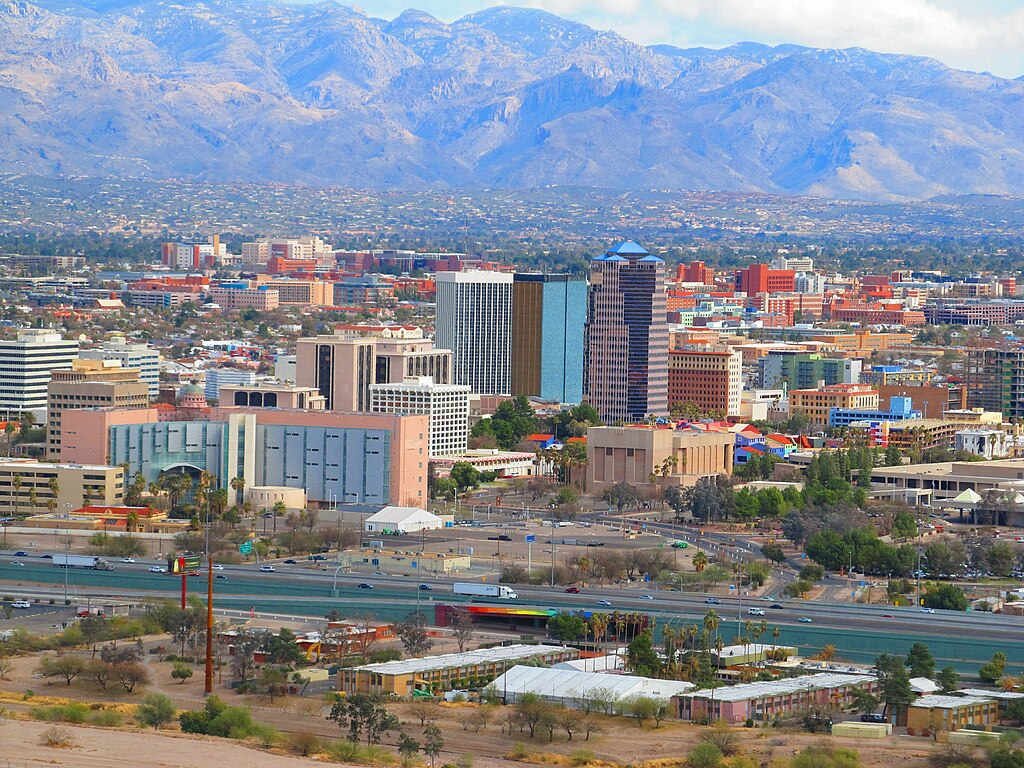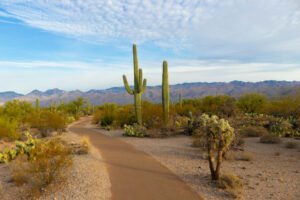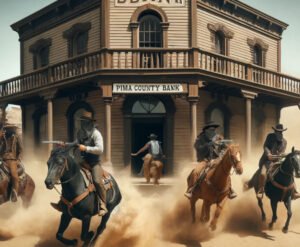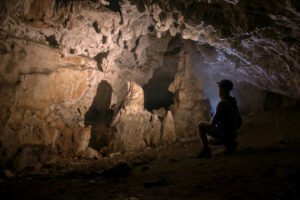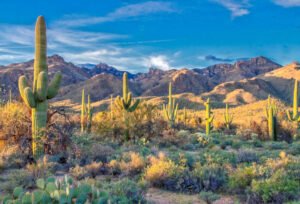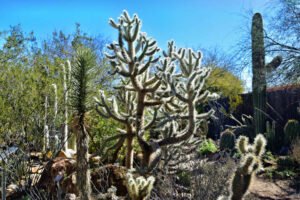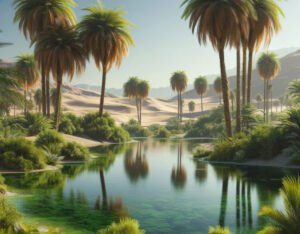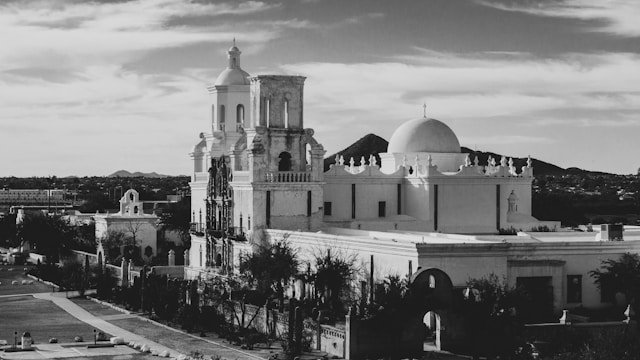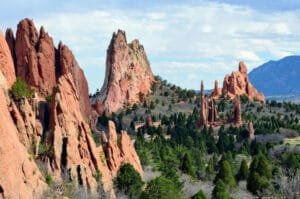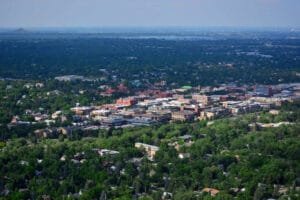Tucson, AZ: 14 of the Best Family Experiences
Are you looking for things to do in Tucson with your family? This vibrant city in Arizona offers a treasure trove of activities that are perfect for families seeking adventure, education, and relaxation. From exploring the iconic landscapes of the Sonoran Desert to immersing yourselves in interactive museums and historical sites, Tucson provides a wide array of experiences that cater to all ages and interests. In this blog post, we’ll guide you through the top family-friendly activities that promise to make your visit to Tucson unforgettable. Join us as we explore the best that this enchanting city has to offer.
Table of Contents
You can also search for a GetYourGuide or Viator tour of Tucson.
Visit the Arizona-Sonora Desert Museum
If you’re planning a family trip to Tucson, Arizona, one destination that should top your list is the Arizona-Sonora Desert Museum. This unique museum is more than just a traditional exhibit space; it’s a comprehensive outdoor experience that blends elements of a zoo, botanical garden, art gallery, natural history museum, and aquarium. Here’s what makes the Arizona-Sonora Desert Museum a must-see for families visiting Tucson, Arizona.
Experience Nature Up Close
The Arizona-Sonora Desert Museum showcases the rich biodiversity of the Sonoran Desert in a way that’s engaging and educational for all ages. Spanning across 98 acres, over 85% of the museum is outdoors, offering visitors a dynamic exploration of over 230 animal species and 1,200 plant varieties native to the region. From watching the majestic flight of a Harris’s hawk to encountering a mountain lion, the museum provides up-close experiences with wildlife in naturalistic habitats.
Interactive and Educational Exhibits
Children and adults alike can benefit from the museum’s interactive exhibits. The Earth Sciences Center, which houses a cave and mineral collection, offers a cool retreat from the desert sun while teaching visitors about the geology of the Sonoran Desert. Meanwhile, the Riparian Corridor features otters and beavers, providing insights into the aquatic life of the desert’s rivers and streams.
Live Demonstrations and Programs
The museum is renowned for its live animal demonstrations, which are both educational and entertaining. The Raptor Free Flight program, for example, is a seasonal demonstration where visitors can watch native birds of prey flying completely untethered in the open desert. These programs provide a deeper understanding of the species’ behaviors and adaptations.
Art and Culture
In addition to natural exhibits, the Arizona-Sonora Desert Museum also celebrates the cultural heritage of the region. The Ironwood Gallery hosts changing exhibitions of fine art and photography, many focusing on themes of nature and conservation.
Visitor Information
The museum is open every day, and hours vary by season. It’s located just a short drive from downtown Tucson, Arizona, making it an easy and rewarding day trip for families. Admission prices vary, with discounts for children and seniors, and membership options that provide unlimited visits and other benefits. The Arizona-Sonora Desert Museum is more than just a day visit; it’s a comprehensive educational experience that brings the natural world to life. It’s a perfect addition to any family’s itinerary when visiting Tucson, Arizona, offering memorable experiences that are as educational as they are entertaining.
Explore Saguaro National Park
If you’re looking for a truly iconic Tucson experience, head to Saguaro National Park, where the landscape is dotted with the majestic saguaros that have become synonymous with the American Southwest. This expansive national park, split into two districts on either side of Tucson, offers a spectacular backdrop for outdoor activities suitable for the whole family.
Getting There
Saguaro National Park is easily accessible, with the East (Rincon Mountain District) and West (Tucson Mountain District) sections about a 30-minute drive from downtown Tucson. Each side offers unique landscapes and trails, so it’s worth visiting both if time permits.
Things to Do
Visiting Saguaro National Park is a fantastic way to immerse your family in nature. Here are some activities that you shouldn’t miss:
- Scenic Drives: Both districts of the park feature loop drives that provide stunning views of the desert and are perfect for those who prefer to explore from the comfort of their vehicle. The Cactus Forest Loop Drive in the East and the Bajada Loop Drive in the West are both well-paved and accessible.
- Family Hiking: For a gentle yet rewarding hike, try the Freeman Homestead Trail or the Desert Discovery Nature Trail, both of which are short and have very minimal elevation gain. These trails offer educational signage that provides valuable insights into the desert ecosystem.
- Picnicking: There are several picnic areas throughout the park, providing a perfect spot to relax and enjoy a meal surrounded by the serene desert landscape.
Best Time to Visit
The best times to visit Saguaro National Park are during the fall and spring when temperatures are cooler and the desert life is most active. Springtime is particularly magical, as the desert blooms with colorful wildflowers and the saguaros themselves blossom with white flowers.
Visitor Tips
- Stay Hydrated: The desert climate can be very dry and hot, especially in the summer months, so carrying sufficient water is crucial.
- Respect Wildlife: Keep a safe distance from wildlife and do not feed the animals.
- Leave No Trace: Help preserve the beauty of the park by carrying out all trash and following the Leave No Trace principles.
Exploring Saguaro National Park is more than just a day out; it’s an opportunity to connect with nature and learn about the unique ecosystems of the Sonoran Desert. Whether you’re hiking, picnicking, or simply enjoying the views, Saguaro National Park provides an unforgettable experience for all ages.
Discover the Pima Air & Space Museum
When visiting Tucson with your family, don’t miss the opportunity to discover the Pima Air & Space Museum, one of the largest air and space museums in the world. This museum offers an impressive display of aircraft and spacecraft that span over a century of aviation history, making it a must-visit destination for enthusiasts of all ages.
What You’ll See
The Pima Air & Space Museum is home to over 350 aircraft spread across 80 acres and several hangars. This extensive collection includes military, civil, and space aircraft. Highlights include a Lockheed SR-71 Blackbird, a B-17 Flying Fortress, and an actual Boeing 787 Dreamliner. The museum also features a replica of the 1903 Wright Flyer, giving visitors a glimpse into the humble beginnings of flight.
Tours and Exhibits
- Guided Tours: Opt for a tram tour of the museum’s vast outdoor display area. These tours are led by knowledgeable guides who provide insights into the history and technology behind the aircraft.
- Hangar Tours: The museum’s hangars are filled with meticulously restored aircraft. Each hangar has a theme, such as World War II or experimental aircraft, allowing visitors to delve deeper into specific areas of aerospace history.
- Space Gallery: The Space Gallery showcases artifacts related to space exploration, including satellite models and an Apollo command module.
Educational Programs
The Pima Air & Space Museum is committed to educational outreach, offering a variety of programs designed to inspire young minds. These include summer camps, school field trips, and hands-on activities that make the science of flight accessible and exciting for children.
Best Time to Visit
The museum is open year-round, but the cooler months from October to April provide a more comfortable experience, especially if you plan to explore the outdoor exhibits extensively.
Visitor Tips
- Plan Ahead: With so much to see, consider spending at least half a day at the museum to fully enjoy all the exhibits and tours.
- Wear Comfortable Shoes: Much of your visit will involve walking, both indoors and outdoors, so comfortable footwear is essential.
- Photography: Photography is encouraged, so bring your camera to capture the impressive displays.
The Pima Air & Space Museum offers a fascinating journey through the history of aviation and space exploration. It’s an educational adventure that captivates visitors of all ages, making it a standout experience during your family’s visit to Tucson.
Spend a Day at Old Tucson
Spending a Day at Old Tucson is not just an activity; it’s a step back in time to the Wild West. Old Tucson is a movie studio and theme park located just west of Tucson. This iconic location has been the backdrop for countless Western films and television shows and today offers a blend of authentic historical experiences and family fun.
Experience the Old West
Old Tucson immerses visitors in a classic Western town setting. As you walk through the park, you’ll see historical buildings that look like they’re straight out of a Western movie, complete with saloons, jails, and general stores. These structures aren’t just for show; many offer interactive experiences, performances, or dining options.
Live Shows and Entertainment
One of the highlights of spending a day at Old Tucson are the live performances. Visitors can watch thrilling stunt shows depicting classic gunfights and dramatic falls, which capture the wild spirit of the Old West. Musical shows and comedic acts are also part of the daily schedule, offering entertainment suitable for all ages.
Rides and Attractions
Old Tucson provides a variety of rides that keep the Western theme alive. Take a ride on a vintage carousel or test your nerves on a mini train that tours the outskirts of the park. For the younger visitors, panning for gold is a delightful experience, and horseback rides offer an authentic feel of traveling in the old days.
Dining and Shopping
Enjoy traditional Western fare at one of the park’s eateries. From barbecue to classic American snacks, the food options help enhance the day’s experience. Don’t forget to visit the gift shops, which offer unique Western-themed souvenirs, perfect for remembering your day at Old Tucson.
Best Time to Visit
The best time to visit Old Tucson is during the cooler months, from late fall to early spring, when the weather is more accommodating for outdoor activities.
Visitor Tips
- Wear Comfortable Clothing: Be prepared for a day of walking and exploring; comfortable shoes and sun protection are must-haves.
- Check Event Schedules: Visit Old Tucson’s website or inquire at the entrance about show times to make sure you don’t miss your favorite performances.
- Arrive Early: Getting there early can help you make the most of your day, especially if you want to catch the early shows or beat the crowds to popular attractions.
Spending a day at Old Tucson is like walking onto the set of a Western film with added layers of entertainment and education. It’s a perfect way for families to experience the history and excitement of the Old West together.
Enjoy Family Fun at Reid Park Zoo
Reid Park Zoo is an essential experience for any visit to Tucson. This well-loved zoo spans 24 acres and is home to hundreds of animals from all over the world, making it a fantastic destination for animal lovers of all ages.
Explore Diverse Habitats
Reid Park Zoo is organized into four major zones: the Adaptation Zone, the South America Zone, the Asia Zone, and the African Animals Zone. Each area is designed to mimic the natural habitats of its residents, from the lush greenery of the South American rainforest to the rugged landscapes of the African savannah.
See Exotic Animals
Visitors can see a variety of animals, including elephants, lions, giraffes, and zebras. The zoo also features smaller, less-known species that are equally fascinating. The aviaries are a hit with families, where colorful and exotic birds fly overhead. Don’t miss the chance to see the zoo’s reptile house, which houses snakes, lizards, and other reptiles in carefully controlled environments.
Participate in Educational Programs
Reid Park Zoo offers a range of educational programs that enhance the visiting experience. These programs are designed to provide deeper insights into the lives of the animals and the conservation efforts in place to protect them. Check the zoo’s schedule for daily animal encounters, feeding times, and keeper talks.
Conservation Efforts
The zoo is not just about displaying animals; it also plays a critical role in wildlife conservation. Learn about the zoo’s involvement in global conservation initiatives and how they work to protect species from extinction. This adds a meaningful layer to your visit, showing how each ticket contributes to these efforts.
Best Time to Visit
Early morning or late afternoon are the best times to visit Reid Park Zoo, as the animals are most active during cooler temperatures. Plus, visiting during these times helps you avoid the midday heat and crowds.
Visitor Tips
- Stay Hydrated: Bring water bottles, as exploring the zoo can take several hours.
- Wear Comfortable Shoes: There’s a lot of walking involved, so comfortable footwear is essential.
- Use the Zoo Map: Take advantage of the zoo map to navigate efficiently and ensure you see all the animal exhibits.
Enjoying Reid Park Zoo is more than just a day out; it’s an opportunity to learn about and connect with nature in an engaging and responsible way. This zoo offers a rich tapestry of experiences that entertain and educate, making it a cherished part of any Tucson itinerary.
Learn at the Children’s Museum Tucson
When you want to enrich your family trip with educational content, make sure to learn at the Children’s Museum Tucson. This vibrant museum is designed specifically for children, offering a wealth of interactive exhibits and programs that encourage learning through play.
Discover Interactive Exhibits
The Children’s Museum Tucson features several hands-on exhibits that cover a wide range of topics from science and technology to arts and culture. Highlights include:
- Build It!: This exhibit allows children to engage in construction activities using real tools and materials, teaching them about engineering and physics.
- Electri-City: Here, children can learn about electricity and energy through interactive displays that let them power different objects and see the effects of energy consumption.
- Public Safety: Focused on teaching safety, this area provides kids with the chance to learn from real firefighters and police officers about their work and the importance of public safety.
Engage in Special Programs
The museum often hosts special programs and events that provide additional learning opportunities. These include story times, science demonstrations, and art workshops, all designed to make learning fun and accessible. Check the museum’s calendar to see what’s on during your visit.
Explore Outdoor Spaces
Don’t miss the museum’s outdoor courtyard, which includes water play areas and more physical activities. This space provides a perfect balance of learning and physical play, helping children apply their knowledge in a practical setting.
Visitor Experience
- Suitable for All Ages: While the museum is geared towards younger children, there are plenty of activities that older children and adults will find interesting and engaging too.
- Facilities: The museum is equipped with all the necessary amenities, including restrooms, a snack area, and a gift shop where you can purchase educational toys and books.
Best Time to Visit
The best time to visit the Children’s Museum Tucson is during weekday mornings when it is less crowded. This allows your children to fully engage with the exhibits without the pressure of waiting turns.
Visitor Tips
- Plan Your Visit: Review the museum’s website beforehand to plan your visit around specific programs or events that interest your child.
- Stay Hydrated: Bring water bottles to stay hydrated as you explore.
- Dress Comfortably: Wear comfortable clothes as many activities are hands-on and some are outdoors.
Learning at the Children’s Museum Tucson provides a stimulating environment where children can explore and understand the world around them in an interactive, enjoyable way. It’s a place where education meets creativity, ensuring that every visit leaves a lasting impression on young minds.
Take a Cave Tour at Colossal Cave Mountain Park
For an adventurous family outing, take a cave tour at Colossal Cave Mountain Park. Located just outside of Tucson, this extensive cave system offers a fascinating glimpse into the underground world and serves as a cool retreat from the desert heat.
Discover the Cave
Colossal Cave is a limestone cave known for its history, geology, and the legend of hidden treasures. The cave’s interior remains at a constant temperature, providing a comfortable exploration experience year-round. During the tour, you’ll see stunning formations such as stalactites, stalagmites, flowstone, and boxwork.
Types of Tours Available
- Classic Cave Tour: This guided tour is suitable for all ages and takes visitors through well-lit paths while a guide shares the history and science behind the cave’s formations.
- Wild Cave Tour: For the more adventurous, this tour takes you off the beaten path to crawl through less accessible parts of the cave. It’s a physically demanding experience that offers a closer look at the cave’s natural beauty.
- Ladder Tour: This intermediate tour involves climbing ladders and navigating narrower passages, offering a blend of adventure and discovery with moderate physical challenges.
Other Activities at the Park
Colossal Cave Mountain Park isn’t just about the cave tours. The park also offers:
- Hiking Trails: Explore the desert landscape on one of the park’s hiking trails, with options ranging from easy to challenging.
- Horseback Riding: Experience the scenic trails of the park from horseback. The stables offer guided rides that provide a unique perspective of the Sonoran Desert.
- Picnicking: Enjoy a family picnic in one of the park’s designated areas, complete with tables and grills.
Best Time to Visit
While the cave maintains a consistent temperature, visiting the park during fall, winter, or early spring is most comfortable, especially if you plan to engage in above-ground activities like hiking or horseback riding.
Visitor Tips
- Wear Appropriate Clothing: For the cave tours, wear comfortable, sturdy shoes and bring a light jacket as the cave can feel cool.
- Book in Advance: Especially during peak tourist seasons, it’s wise to book your tour in advance to secure your spot.
- Stay Hydrated: Carry water, particularly if you’re hiking or engaging in other outdoor activities around the park.
Taking a cave tour at Colossal Cave Mountain Park offers an engaging blend of education, history, and adventure. It’s a perfect way to combine learning with physical activity, making for an unforgettable family outing in Tucson.
Hike in Sabino Canyon
One of the most scenic natural attractions in Tucson is Sabino Canyon, located in the Coronado National Forest. This area offers a unique opportunity to hike in Sabino Canyon and explore its rich landscapes, featuring rugged mountains, diverse wildlife, and lush vegetation.
Discover Sabino Canyon’s Trails
Sabino Canyon provides a variety of trails that cater to all levels of hikers. From easy strolls along paved paths to more challenging hikes up rugged terrain, there’s something for everyone. Notable trails include:
- Sabino Creek Trail: An easy, family-friendly trail that follows the creek and offers plenty of shade and water spots where you can relax and enjoy the natural beauty.
- Seven Falls Trail: A moderate hike that takes you to a beautiful series of waterfalls. This trail is especially popular in the spring when the water flow is at its peak.
Tram Services
For those who prefer a less strenuous visit, Sabino Canyon offers tram tours. These trams travel along a 3.8-mile road, providing narrated tours that highlight the canyon’s history, flora, and fauna. The trams make several stops, allowing you to get off, explore, and catch a later tram back to the visitor center.
Wildlife and Plant Life
Sabino Canyon is home to a variety of wildlife, including deer, javelinas, and numerous bird species. The plant life is equally diverse, with an abundance of saguaro cacti, mesquite trees, and wildflowers, especially vibrant during the spring months.
Best Time to Visit
The best time to hike in Sabino Canyon is during the cooler months from October to April. Summer temperatures can be extreme, but early mornings and late afternoons can still be enjoyable if you’re prepared with plenty of water and sun protection.
Visitor Tips
- Water and Snacks: Always carry enough water, especially during the hotter months, and bring snacks for energy.
- Footwear: Wear sturdy, comfortable footwear suitable for rocky and uneven terrain.
- Check Weather: Always check the weather before heading out, as flash floods can occur during the rainy season.
Hiking in Sabino Canyon offers an immersive experience into the heart of Tucson’s natural beauty. Whether you’re looking for a leisurely walk or an adventurous hike, Sabino Canyon provides a memorable outdoor adventure for all ages.
Stroll Through Tucson Botanical Gardens
Stroll through Tucson Botanical Gardens for a peaceful and enriching experience that highlights the beauty and diversity of arid-land botany. Nestled in the heart of Tucson, this 5.5-acre garden offers visitors a chance to see a variety of plant species that thrive in desert conditions, along with seasonal exhibits that appeal to all ages.
Explore Diverse Gardens and Exhibits
The Tucson Botanical Gardens feature over a dozen specific garden areas, each dedicated to a different theme or type of plant. Highlights include:
- Herb Garden: Discover the scents and uses of various herbs that grow well in arid environments.
- Butterfly Garden and Pavilion: This area is a favorite among visitors, especially children, where you can walk among live butterflies and learn about different species and their life cycles.
- Cactus and Succulent Garden: Learn about the wide variety of cacti and succulents, including some rare species unique to the Sonoran Desert.
Educational Opportunities
The Gardens are not just about plant exhibits; they also offer educational programs and workshops for both children and adults. These programs often focus on desert gardening, botanical art, and the ecology of the region.
Art and Sculpture
Throughout the Gardens, you’ll find various sculptures and art installations that enhance the beauty of the botanical displays. These works are crafted by local artists and often reflect the natural themes of the gardens.
Seasonal Events
The Tucson Botanical Gardens hosts several seasonal events that transform the garden experience. Events such as the Butterfly Magic exhibit in the cooler months and Luminaria Nights in December offer unique ways to enjoy the gardens with family and friends.
Best Time to Visit
Early morning or late afternoon are the best times to visit the Tucson Botanical Gardens to avoid the midday heat. Spring and fall are particularly lovely due to the mild weather and active plant life.
Visitor Tips
- Wear Comfortable Shoes: The gardens invite leisurely strolls, so comfortable footwear is recommended.
- Bring Water: Keep hydrated as you explore the outdoor trails and exhibits.
- Check the Calendar: Look at the Gardens’ calendar for special tours, events, and exhibitions that might coincide with your visit.
Strolling through Tucson Botanical Gardens offers a tranquil escape into nature, filled with educational opportunities and the serene beauty of desert plant life. It’s an ideal activity for those seeking a quiet day out or looking to learn more about desert ecosystems and gardening.
Play and Learn at the Gaslight Theatre
Play and learn at the Gaslight Theatre for an entertaining and unique experience that combines lively performances with a touch of educational value. Located in Tucson, this popular theatre is renowned for its family-friendly melodrama performances that encourage audience participation and provide hearty laughter for all ages.
Experience the Performances
The Gaslight Theatre is best known for its melodramatic plays that feature a mix of comedy, music, and melodrama—a style that dates back to the Victorian era but is infused with a modern twist. The audience is invited to cheer for the heroes, boo the villains, and sing along during the musical interludes.
Engaging, Interactive Theatre
What makes the Gaslight Theatre particularly special is its interactive nature. The performances are designed to engage the audience fully, making each show a dynamic and interactive experience. This interactive style not only entertains but subtly educates young audiences about theatrical expressions and the nuances of storytelling.
Themed Shows and Seasons
The theatre presents a variety of shows throughout the year, each with its own theme ranging from Westerns to Christmas specials. Each performance is crafted to suit the theme, complete with appropriate costumes, sets, and music, providing a rich, immersive experience.
Family Nights and Special Events
The Gaslight Theatre also hosts special event nights, including family nights where games and activities are geared towards younger audiences. These events often include face painting, magic shows, and other family-friendly activities that enhance the theatrical experience.
Dining and Snacks
Enjoy the full Gaslight experience by dining at the theatre. The venue offers a menu of casual dining options, such as pizza, popcorn, and ice cream, which you can enjoy right at your seat during the show.
Best Time to Visit
The theatre runs shows year-round, with matinee and evening performances to accommodate various schedules. Booking in advance is recommended, especially for weekend shows or special performances.
Visitor Tips
- Participate Fully: Get the most out of your visit by joining in the fun—cheer, boo, and laugh along with the performance.
- Arrive Early: Arriving early will give you a better choice of seating and the time to settle in and perhaps enjoy a meal before the show starts.
- Check Accessibility Options: The theatre is accessible, but it’s a good idea to check in advance if you have specific seating needs.
Playing and learning at the Gaslight Theatre offers a delightful blend of entertainment and education, wrapped in the charm of melodramatic theatre. It’s a perfect way for families to enjoy an evening filled with laughter, music, and good-natured fun.
Bike the Oro Valley Section of The Tucson Loop
Biking the Oro Valley section of The Tucson Loop is an excellent choice for cyclists looking to explore the picturesque landscapes of Tucson. This part of The Loop offers an accessible and well-maintained path that winds through some of the most scenic areas of the region, making it perfect for all ages and skill levels.
Discover the Path
The Tucson Loop is a renowned multi-use trail that encircles the greater Tucson area, and the Oro Valley section is known for its smooth pavement and user-friendly route. This stretch is particularly appealing due to its sweeping views of the Santa Catalina Mountains and its relatively flat terrain.
What You’ll Experience
- Scenic Views: The path offers stunning views of both the mountains and the expansive Sonoran Desert, providing a backdrop that is both inspiring and relaxing.
- Wildlife and Flora: As you ride, keep an eye out for local wildlife such as roadrunners, coyotes, and various bird species. The area’s unique desert flora, including saguaros and other cacti, adds to the picturesque setting.
- Art Installations: Along the Loop, you’ll encounter various pieces of public art and installations, adding an element of cultural enrichment to your ride.
Amenities Along the Route
- Rest Stops: There are numerous rest areas along the path where you can stop for a break. These spots often feature benches, water stations, and sometimes restrooms.
- Connectivity: This section connects smoothly to other parts of The Tucson Loop, allowing you to extend your ride with ease and explore further if desired.
Best Times to Ride
To make the most of your cycling experience, consider riding early in the morning or later in the afternoon, especially during the warmer months. These times offer cooler temperatures and softer light for your ride. Spring and fall are ideal seasons to bike here, thanks to the mild weather and natural beauty of the area in bloom.
Tips for Cyclists
- Prepare for the Sun: Tucson is sunny most days of the year, so wear sunscreen, sunglasses, and a hat to protect yourself from the sun.
- Hydration: Bring plenty of water to stay hydrated, as the dry climate can lead to quicker dehydration.
- Equipment: Ensure your bike is in good condition before heading out, and consider carrying a basic repair kit for longer rides.
Biking the Oro Valley section of The Tucson Loop is more than just a cycling activity; it’s an opportunity to immerse yourself in the natural beauty and tranquility of Tucson’s outdoors. Whether you’re a local resident or a visiting cyclist, this route promises a rewarding and picturesque journey through one of Arizona’s most beloved landscapes.
Explore the University of Arizona Campus and Science Center
Exploring the University of Arizona Campus and Science Center is a fantastic way for families and individuals alike to engage with a vibrant educational environment and delve into scientific wonders. This renowned university is not only a hub for academic excellence but also a center for cultural and scientific learning, accessible to the Tucson community and visitors.
Campus Highlights
The University of Arizona campus is known for its beautiful architecture, sprawling green spaces, and historic buildings. A self-guided tour can take you to notable landmarks such as:
- Old Main: The oldest building on campus, offering a glimpse into the university’s past.
- Centennial Hall: A premier location for performances and events, showcasing a mix of local and international talent throughout the year.
Visit the Science Center
The Flandrau Science Center & Planetarium, located on the university campus, is a must-visit. It offers a variety of exhibits and activities focused on science and education, including:
- Planetarium Shows: The planetarium features state-of-the-art projections about space, the stars, and the universe, making it a captivating experience for all ages.
- Interactive Exhibits: Engage with hands-on displays that cover topics from earth science to astronomy and beyond. These exhibits are designed to be educational and accessible, sparking curiosity in minds young and old.
Educational Programs
Both the university and the Science Center offer educational programs that cater to the public, including:
- Guest Lectures and Events: Throughout the year, the university hosts a range of events featuring guest speakers from various fields.
- Workshops and Classes: Specialized sessions are available, often focusing on specific scientific or cultural topics.
Best Time to Visit
The best time to explore the University of Arizona Campus and Science Center is during the academic year when the full range of programs and activities is in operation. However, summer visits can also be rewarding, with less crowded conditions and specialized summer events.
Visitor Tips
- Wear Comfortable Shoes: The campus is extensive, so comfortable footwear is recommended for exploring.
- Check the Schedule: Before visiting, check the university’s and the Science Center’s online calendars to plan your visit around specific events or exhibitions.
- Parking: Ensure to check parking options and regulations if you’re driving, as the campus can be busy during the semester.
Exploring the University of Arizona Campus and Science Center offers a rich blend of educational, scientific, and cultural experiences. Whether you’re a local or a visitor, this exploration can provide insightful, inspiring, and engaging activities suitable for all ages.
Relax at Agua Caliente Park
Relax at Agua Caliente Park, one of Tucson’s most cherished natural oases. This historic park is renowned for its warm springs, lush vegetation, and tranquil ponds, making it an ideal spot for relaxation and nature appreciation. Whether you’re seeking a peaceful retreat or a scenic place for family picnics, Agua Caliente Park offers a perfect setting.
Discover the Natural Beauty
Agua Caliente, literally meaning “hot water,” is a park centered around a natural warm spring. The main attractions include three ponds, which vary in size and are surrounded by tall palms and lush foliage. These waters are often home to diverse wildlife, including numerous bird species, making the park a popular spot for birdwatchers.
Enjoy the Walking Trails
The park features several easy walking trails that loop around the ponds and through the park’s varied landscapes. These trails are well-maintained and suitable for all ages, providing a gentle way to explore the natural environment without straying too far from comfort.
Picnicking and Relaxation Areas
Scattered throughout the park are numerous picnic areas equipped with tables and benches, many of which offer shade under the canopy of mature trees. These spots are perfect for a family outing or a quiet afternoon with a book.
Visit the Historic Ranch House
The Ranch House Visitor Center and Art Gallery is located within an historic building that dates back to the 1920s. It offers exhibits about the park’s natural and cultural history and features rotating art exhibits from local artists.
Best Time to Visit
Agua Caliente Park is beautiful year-round, but the best time to visit is during the cooler months from October to April. During these months, the weather is mild, and the park is lush and green, offering a stark contrast to the surrounding desert.
Visitor Tips
- Wildlife Watching: Bring binoculars if you enjoy birdwatching, as the park is a habitat for many bird species.
- Stay Hydrated: Even in cooler months, bringing water to stay hydrated is important.
- Photography: The scenic beauty of the park makes it a great spot for photography, so don’t forget your camera.
Relax at Agua Caliente Park to enjoy a slice of nature’s serenity away from the urban hustle. With its beautiful ponds, historical features, and abundant wildlife, the park provides a peaceful escape for visitors of all ages.
Explore San Xavier del Bac Mission with Your Family
Visiting San Xavier del Bac Mission offers a rich cultural and educational experience for families exploring Tucson. Known as the “White Dove of the Desert,” this historic mission stands as one of the most stunning examples of Spanish Colonial architecture in the United States and provides an intriguing glimpse into the region’s past.
Discover the History
San Xavier del Bac Mission was founded in 1692 by Father Eusebio Kino, a Jesuit explorer, and was completed in 1797. It remains a significant cultural and religious landmark, serving the Tohono O’odham community and visitors alike. The mission’s architecture features intricate carvings, frescoes, and statues that are beautifully preserved, showcasing the artistry and craftsmanship of the 18th century.
Family-Friendly Activities
- Guided Tours: Take a guided tour, which is available most days. Docents share the mission’s history, stories of the Tohono O’odham people, and details of the stunning art and architecture. These tours are engaging for children and adults, making history come alive in an accessible way.
- Self-Guided Exploration: Wander around the mission at your own pace. Informational plaques provide details about the mission’s history and significance, allowing you and your family to learn at a leisurely pace.
- Visit the Museum: A small museum on-site offers exhibits on the mission’s history, the desert environment, and the Tohono O’odham culture. It’s a great educational complement to your visit.
Local Insights
- Events and Festivals: The mission hosts several cultural and religious events throughout the year that can provide a deeper understanding of the local community. The Fiesta de San Xavier, held annually in December, is a particularly vibrant event featuring traditional music, dance, and food.
- Crafts and Food: Local vendors often set up near the mission, selling traditional Tohono O’odham crafts, such as handwoven baskets and pottery, as well as homemade treats like fry bread. These make for unique souvenirs and a taste of local flavor.
Tips for Visiting
- Dress Respectfully: As the mission is an active place of worship, dress modestly out of respect for the parishioners and the site’s religious significance.
- Photography: Photography is allowed on the grounds and inside the mission, but it is respectful to avoid taking pictures during services or private events.
- Check the Schedule: Before visiting, check the mission’s website or call ahead to ensure it is open to the public, especially if you’re planning around a religious service or event.
Visiting San Xavier del Bac Mission is more than just a step back in time; it’s an opportunity to immerse your family in the rich traditions and beautiful artistry that are woven into the fabric of Tucson’s history. It offers a peaceful, reflective environment where everyone can gain insights into the cultural heritage of the region. Don’t miss this chance to connect with history and create lasting memories with your family in one of Tucson’s most revered landmarks.
Conclusion: Uncover the Wonders of Tucson
Tucson offers an abundance of activities that cater to families and individuals alike, providing a diverse array of experiences that blend nature, culture, education, and recreation. From the rugged trails of Saguaro National Park to the interactive exhibits at the Children’s Museum Tucson, each destination invites you to explore and enjoy what makes Tucson truly unique.
Whether you choose to delve into the rich history at Old Tucson, marvel at the stars from the Flandrau Science Center, or relax in the natural springs of Agua Caliente Park, Tucson is a city that never ceases to amaze. Its blend of natural beauty, vibrant cultural scenes, and engaging educational opportunities makes it a perfect destination for travelers seeking both adventure and relaxation.
As you plan your visit, consider incorporating some of the highlighted activities into your itinerary to fully experience the charm and diversity of Tucson. Each location offers a chance to create lasting memories and discover new passions. So pack your bags, bring your sense of wonder, and prepare to explore the captivating city of Tucson — a place where every visit enriches your spirit and calls you back for more.
You can also search for a GetYourGuide or Viator tour of Tucson.

